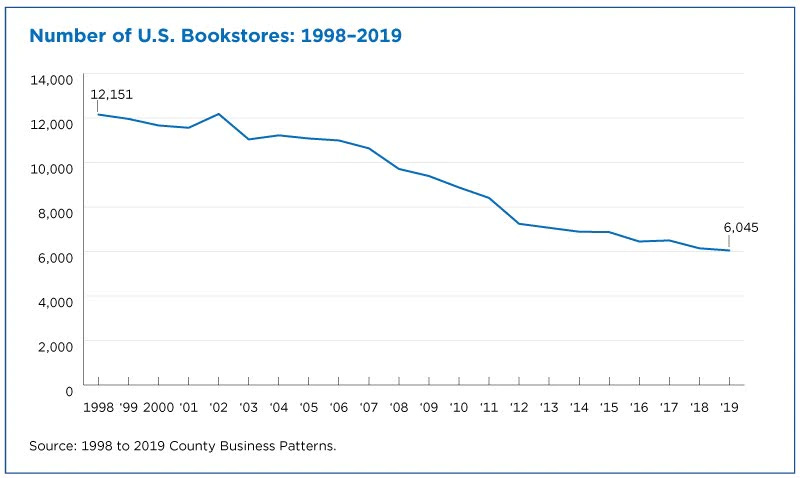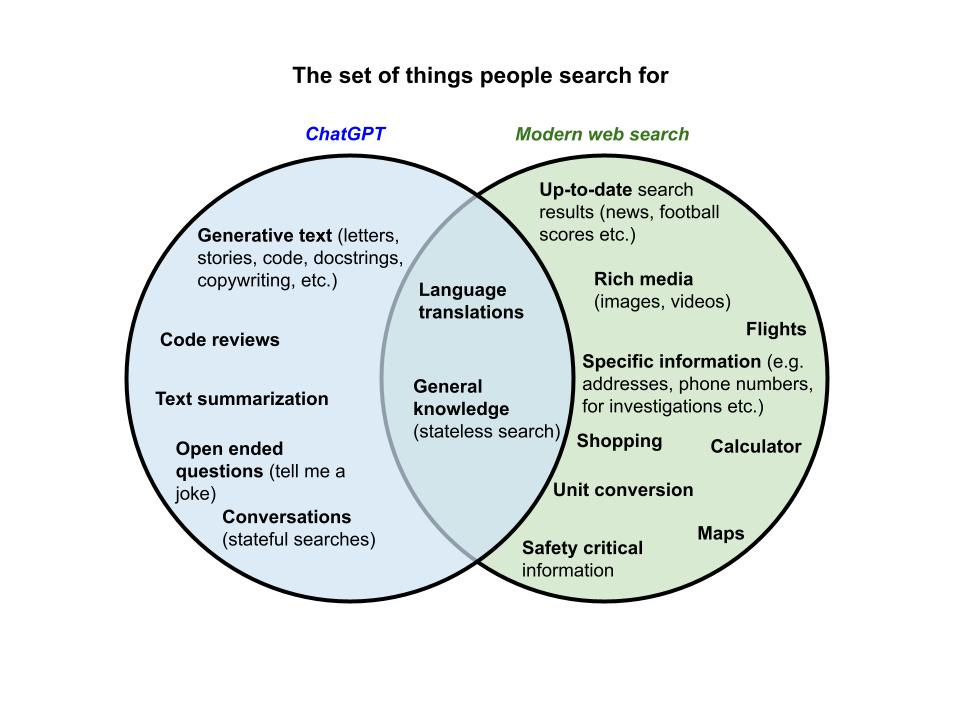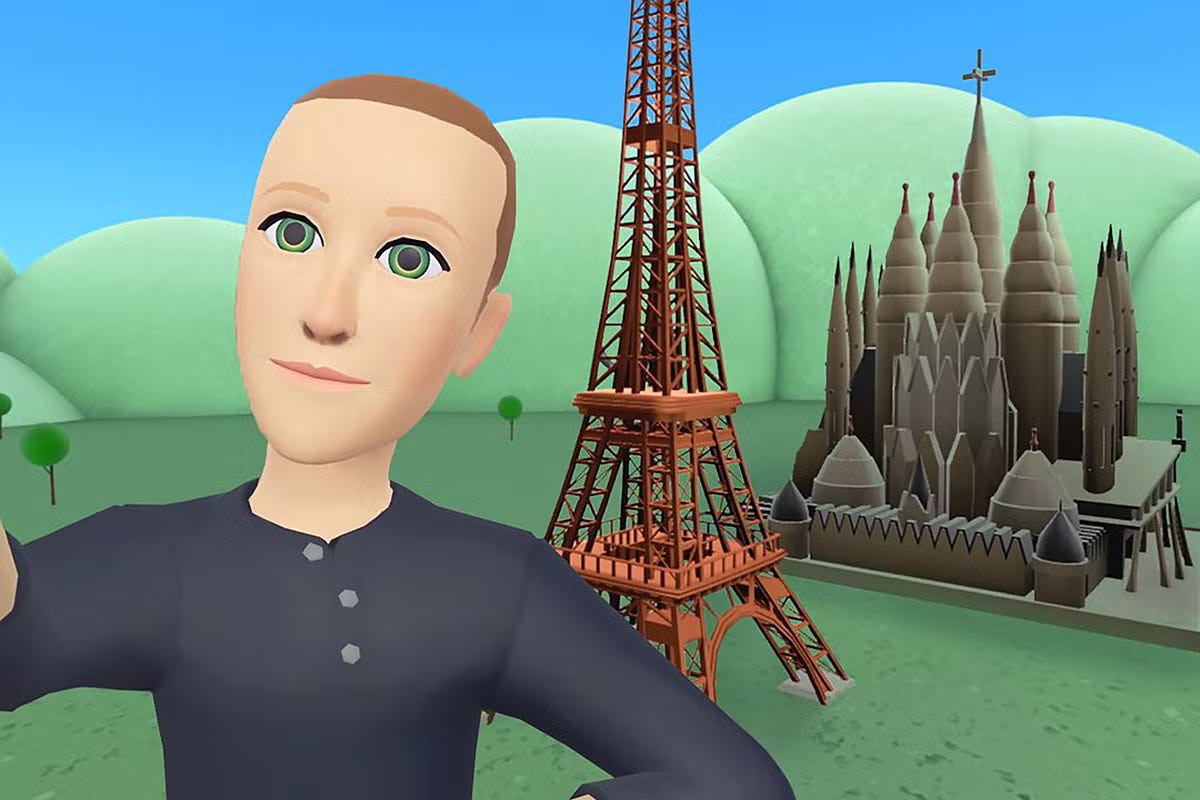AI : The Next Foundational Technology Platform
Why AI be the next major application layer following on from cloud and mobile, why ChatGPT won't replace Google, and why we're definitely maybe at an inflection point.
damp squib \noun\ A situation or event which is much less impressive than expected.
At the dawn of 2022, a flurry of articles 1234 proclaimed Meta’s Metaverse as chalk horse (odds on) to become the next major platform player; a boundless, immersive wonderland set to liberate us from the shackles of reality an unborn dystopia with sole purpose to harvest evermore personal data for the sake of maximising digital advertising revenue.
Between January and October, Meta’s Horizon Worlds actually lost a third of users, with MAUs hovering at just 200k5. And all the while, another more feasible technology wave was quietly brewing, until suddenly, it caught the imagination of more than just tech enthusiasts.
If ever there were pessimists waxing lyrical about an AI winter looming (hint, there were67), oh how they were proved daft. Even the most optimistic onlookers took on a collective incredulity as multiple models of significance stormed onto the scene in 2022, including DALLE-28, Imagen9, Stable Diffusion10, Cicero11, AlphaFold12, and of course, ChatGPT13.
Just a week post launch, without any marketing, ChatGPT crossed the million user mark, beating out Instagram (75 days) and Spotify (150 days)14 by an order of magnitude.
Despite steady progress since BERT15 in the state and quality of large language models (LLMs), ChatGPT caught the public’s imagination in a way that others before it had failed, implying that we’re definitely maybe at an inflection point.
In the mist of a media frenzy, some common narratives emerged,
That such a product could disrupt and displace Google Search1617 — false ❌🙄
That "AI" could emerge to be the next major platform layer — true ✅ 🎰👏
And then, some common narratives did not persist:
That the Metaverse is ready to go viral on its own merit and definitely not by the will of the Zuck.
So hey, while your attention is all Meta needs, I assure you, attention is all you need18.
A True Underdog Story? That’s a Bingo
<2010, Microsoft's Redmond Campus/>
In an ironic turn of events, Microsoft held a funeral for the iPhone to celebrate the launch of their new phone OS. It featured two hearses (one for iPhone, one for Blackberry), a fat Darth Vader on a motorbike19, and a zombie mob doing the dance from Michael Jackson's Thriller20.
As iOS and the iPhone cemented their place as the dominant high-end smartphone/OS and Android the most ubiquitous mobile OS21, Microsoft ultimately dropped the Windows Phone after years of wasted investment and paltry sales, and the "funeral" became the stuff of meme-lore.
Later, Bill Gates would lament that his “greatest mistake ever” was Microsoft missing the Android opportunity22.
Just a year prior, in 2009, another Microsoft product was gearing up for release, the Bing search engine.
Surprisingly, for a product that began life as a punchline23, it quietly gained traction under Satya Nadella's helm, becoming profitable just 18 months after he became CEO24.
And as of October 2021, Microsoft's search advertising arm was delivering an impressive $8.53 billion in revenue, comparable to the current combined ad revenue of both Twitter and Snap combined2526 . Though comparative pittance as compared to Google's whopping $209.49 billion of search advertising revenue in the same year27.
It’s been widely reported that Microsoft are gearing up to challenge the hegemony of Google Search with what they hope may be a killer new feature: incorporating ChatGPT directly into Bing Search28, similar to what You.com29, Neeva30, phind31, and others so expeditiously shipped.
However, while Google may be suffering a mild case of innovator’s dilemma about the whole chatbot thing, Microsoft and Satya Nadella would be wise not to host a funeral for them just yet.
ELI5, why won’t ChatGPT replace Google Search?
Rumours of [Google's] death have been greatly exaggerated
Let’s start by stating the obvious: search engines weren't always as feature rich as they are today.
For example, Google’s first release (199732) was a long way away from supporting rich media searches like images (200133) and video (200534), or language translations (200635), or include seller ratings (200636), or have the ability to search through shopping (200237), or maps (200538), or flights (201139), amongst other forms of search.
These are domains of search that were added over time as the internet and its enabling technologies evolved.
“Searching” does not simply refer to the original version of Google Search. A better definition is something along the lines of navigating a latent space in a particular domain via a query for something relevant.
I hacked together an incomplete Venn diagram showing the set of what people search for using a modern search engine like Google, and ChatGPT.
What should stand out is that the intersection between the two sets is slim, and that short of replacing modern search engines, chatbot LLMs like ChatGPT have instead opened up entirely new domains of search that are supplementary.
Soon enough, web search will simply add generative text capabilities and slowly engulf the left hand side of the Venn Diagram.
Expect to see a Smart Assistant tab among the search options before too long.
Regardless of implementation details, there are short term threats that Google are keenly aware of and rightly spooked by. Indeed, they recently called “Code Red” in response to ChatGPT's virality, i.e. pulling the fire alarm40.
On the one hand, if they don’t offer search via an advanced chatbot in the same vein that OpenAI has, then Google run a real risk of losing queries (correlating to ad revenue) to competitors like Microsoft or OpenAI.
And on the other hand, if Google were to host an advanced chatbot, there’s a genuine concern that it could self-cannibalise their own lucrative ad revenue stream over the intersection of that Venn Diagram.
There are some key questions that Google will be asking:
How much will chatbot based search encroach on the lucrative ads business?
Will adding a Smart Assistant lower the ceiling of the digital advertising total addressable market?
Update: it seems Google are set to respond by releasing Deepmind’s “Sparrow” as a ChatGPT competitor later this year, which would represent the first product released by Deepmind.
Ultimately, the ‘search’ use-case, much like the crypto’s ‘money’ use-case, is simply the most obvious application of an LLM. But advanced models across different domains, typically transformer based architectures, is a general purpose technology that can support multiple use-cases, will underpin many new and diverse businesses, and disrupt multiple old ones.
Sorta, kinda, seems a lot like a platform, wouldn’t you say?
What’s in a Platform
The term platform is vague and often misused41, a helpful dichotomy is that there's roughly three types:
Offering/Service Platform (e.g. 3rd party sellers use Amazon’s e-commerce store)
Digital Business Platform (the programmatic interface to the Service Platform, the “API economy”; enables both external participation and internal development)
Foundational Technology Platform (integral technologies that give rise to an application layer, unburdens businesses of hard-to-solve problems and enables them to flourish)
In the ‘90s and early ‘00s, the internet provided a foundational platform that helped enable a swathe of companies that are monoliths in today’s tech landscape, including Amazon (1994), eBay (1995), Netflix (1997), Alphabet (1998), PayPal (1998), Alibaba (1999), Baidu (2000), and Meta (2004).
Since then, there have been two foundational platforms — mobile and cloud — that have facilitated the rise of internet companies that are today collectively worth many hundreds of billions of dollars by market cap. Mobile led to the existence of companies including Uber (2009), WhatsApp (2009), Instagram (2010), WeChat (2011), Snap (2011), Coinbase (2012), and TikTok (2016), Cloud ushered in an era of SaaS (Software-as-a-Service) companies including Dropbox (2007), Slack (2009), and Zoom (2011).
The internet revolution was enabled by a mismatched economic model between traditional brick-and-mortar, and new online companies who minimised overheads by virtualising replication at zero-marginal cost. Take Amazon, who Wall Street and the media scoffed at as being an "unexciting and marginally profitable online retailer"42. Amazon’s original disruption of book stores began with a virtual store-front that users could access from their home, reducing user friction and operational overheads.

Platforms centralise expertise and decentralise innovation. The inherently open protocols can incentivise new companies to incorporate unto them by improving economic incentives and enhancing user experience.
The invisible hand of hype cycles
As we’ve seen, numerous companies are forged in the fire of novel technological waves enabled by some platform to whom vast sums of are accrued (so long as there’s a shared upside between business economics and consumer benefit).
It’s therefore no wonder that analysts and VCs dream of catching the next major platform/application layer early. Could it be VR, AR, IoT, Autonomous vehicles, Ethereum, or Web3? Investment trends prior to the recent market collapse offer clues at best, but so far none of these tech trends have turned out to be a game-changing consumer platform in the same vein of mobile and cloud.
To stress the point, there’s an apt comparison to draw between Zuck’s Metaverse today and IBM Watson of 2013.
In 2013, the MD Anderson Cancer Center launched a “moon shot” project: diagnose and recommend treatment plans for certain forms of cancer using IBM’s Watson cognitive system. But in 2017, the project was put on hold after costs topped $62 million—and the system had yet to be used on patients.43
IBM Watson was gimmicky at best, and the Health product was potentially dangerous at worst. It was a classic case of misalignment between the claims of marketers and the realities of the technology. Such misalignments lead to negative perceptions and low expectations amongst the public about said technology, and historically have made false-negatives in where VCs direct their investments and which industries turn out to be consequential44.
Similarly, the Metaverse as it exists today is a punchline in the same way Bing was back in 2010. But as demonstrated by the slow progress of Bing and Apple Maps, such technologies are far from static, and can improve as more money and brain-power are invested, even if much of that effort is burned in the process.
Take Ethereum as another example. Looking beyond the much publicised boom-bust hype cycles of crypto, the shady world of tokenising and NFT-ing everything for profit, and the sad realities that zero regulation environments bring to markets, there are genuine use cases for crypto like money, DeFi, and stablecoins45. It's been an exhausting and expensive journey, but it should be clear that there are some use-cases for technology that are better than centralised counterparts.
What’s also clear is that the next major platform that facilitates colossal and diverse value to the end user is unlikely to be crypto.
AI as the next platform?
The hype and virality of 2022’s brand of generative models isn’t evidence enough to suggest a platform revolution. But there are clues. Crypto, whose virality was largely (read above, not completely) motivated by a greater-fools-theory46 of disruptive innovation, and VR, whose virality was fuelled by artificial marketing hype, are yet to create a killer app able to capture the hearts and minds of the people writ large.
Neither is AI, but given the accelerating pace of research in this area and the hard problems that are being knocked down one after the other, it certainly has an enviable level of momentum. But it’s not just generative AI, although that’s where the spotlight gleams brightest. As the likes of TikTok and Shein have shown, there’s opportunities to create value and disrupt incumbents by leveraging superior recommendation engines to offer highly curated content to end users.
The models on offer today are so large (and getting larger, GPT-4 is projected to have a trillion parameters) that they require vast amounts of data and compute power. Consequently, there are only a few companies in the world are capable of training them: Google, OpenAI (backed heavily by Microsoft), Nvidia, and just a handful of others are capable of building the required datasets and and have the pockets to accumulate the necessary compute.
At least some of the hype around AI is already justified, given that the models already built currently support businesses that provide real consumer value (image upscaling, copywriting, CoPilot for developers, facial recognition, image similarity, recommendation engines, image recognition, speech recognition, autonomous driving, etc.).

AI is already, and will continue to be, the enabler for a new wave of businesses who provide hyper-personalised services from areas like personalised health and fitness, personalised education, productivity apps, and democratising creative pursuits. For the companies who choose to ride this wave, there will be a partial correlation between the quality of model used and the quality of service. The moat for these companies will not be the foundational model itself — this will be universally accessible via some API provided by OpenAI or Google or HuggingFace or whoever else — but the secret sauce used to fine-tune the model for the use-case in question.
There’s been an revolting spew of companies advertising on Instagram and TikTok lately that are essentially shiny wrappers around OpenAI’s foundational models like davinci-003 and Dall-E 2, and they’re charging unsavvy customers through the nose for something that ChatGPT does better and for free. This problem will solve itself in time.
Companies who fail to leverage modern AI in a space where competitors do so well will slowly suffocate as users abandon their service in favour of more compelling options, just as the companies of yesteryear who failed to make the transition to digital like Blockbuster and Kodak.
Wrapping up
Going forward, models will become larger, more sophisticated, truly multimodal, and improve drastically in currently challenging media domains like voice, music, video, and 3D, and be fine-tuned to high degrees of quality for industry specific domains like healthcare. To the end user, using the models will simply blend into the background as apps continue to abstract away difficulties in accessing them (just a couple of years ago cutting edge models were only really accessible in some form through a Google Colab Notebook or via APIs, then came HuggingFace 🤗).
There’s no looking back now, we’re entering a brave new world where AI-as-a-general-purpose-platform will provide the backbone for a fresh wave of companies. Thanks largely to MidJourney and ChatGPT, foundational models have entered the public consciousness with a bang, and unlike SnapChat filters, they’re far more than a gimmick.
And this is probably just the beginning. General purpose, multimodal I/O, foundational models capable of interacting with the world through sensors and robotics may be closer than we thought. Questions of regulation, safety, and alignment will struggle to keep pace, the consequences of which are murky at best.
Medium — Has AI hit a dead end?
Stability AI — Stable Diffusion
The Japan Times — ChatGPT could soon be the better way to Google
Google Research — Attention is all you need
Youtube — Microsoft Thriller flash mob
Statistia — Market share by phone OS
Know Your Meme — Google vs Bing
Search Engine Land — Milestone: Bing Now Profitable As Windows 10 Success Boosts Usage
Statista — Twitter Global Advertising Revenue
Statista — Snap Global Advertising Revenue
Statista — Google: Global annual revenue 2002-2021
Phind — search engine
Google — Attention is all you need
The New York Times — Google Sidelines Engineer Who Claims Its A.I. Is Sentient
The New York Times — A New Chat Bot Is a ‘Code Red’ for Google’s Search Business
Wikipedia — Google Search
Wikipedia — Google Images
Wikipedia — Google Video
ThoughtWorks — Platform Tech Strategy: The Three Layers
Vitalik Buterin — What in the Ethereum application ecosystem excites me
Wikipedia — Greater Fool’s Theory











